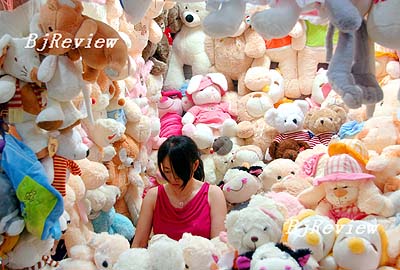|

Blowing away the dark clouds caused by massive worldwide recalls of Chinese toys isn't going to be an easy feat. "We have recalls every year, but none can compare with this year," C.M. Leung, Managing Director of Lung Cheong International Holdings Ltd. (Lung Cheong Holdings). "Made-in-China products have been deeply hurt."
From August to the beginning of September this year, the largest toy company in the world--U.S.-based Mattel Inc.-issued three recalls of over 21 million toys produced by Chinese manufacturers in just one month. Later, Mattel admitted that the biggest contributor to the recalls was flawed design aspects-including small magnets that can be harmful if swallowed-of the products and that this wasn't the fault of the Chinese manufacturers. While lead paint recalls made up a sizeable proportion of the tainted toys, defectively designed toys were the larger proportion.
On August 11, nine days after Mattel's first recall of 967,000 plastic toys containing lead paint, Zhang Shuhong, Vice Chairman of Lee Der Industrial based in Foshan City, Guangdong Province, where the toys were manufactured, committed suicide. The company had enjoyed a good reputation around the city, but quickly went bankrupt, and 2,500 employees were laid off after the recall.
Around 80 to 90 percent of Mattel products are manufactured in China. Mattel and Lee Der had cooperated over the last 15 years without any major difficulties. Lee Der had won the trust of the U.S. company because of its efficiency and the high quality of its products.
A blessing in disguise
Statistics from the Guangdong Customs Bureau show that in September Guangdong toy manufacturers exported $710 million worth of toys, $5.78 million less than the month before. It was the first negative growth for Guangdong toy makers this year. Growth of Guangdong toy exports to the European Union also declined in September.
On September 21, Mattel's executive vice-president of global operations, Thomas Debrowski, issued an apology in Beijing about the recall of the defectively designed toys, and said Mattel was willing to shoulder full responsibility for the recall of those toys. Debrowski's remarks somewhat lifted the burden of responsibility on China's toy manufacturers, but the damage had already been done.
Latest statistics indicate that Guangdong's toy industry has gradually shrugged off the negative impacts from the recalls and that exports are picking up again. Guangdong's toy exports in October grew 27.6 percent year on year; against a 5.4-percent increase in September following the recalls.
Chen Lipeng, Director of the Guangdong Fair Trade Bureau, was discontent about Mattel's apology. "The incident has deeply hurt the reputation of Chinese companies and caused them huge economic losses," he said. "A simple apology won't help repair all the damages." Chen stated that he was in talks with both Chinese and American lawyers and was willing to help Chinese companies launch a transnational lawsuit against Mattel.
However, the most pressing task for Guangdong's toy makers is not finding justice, but how to survive in the future. Leung said that contract original design manufacturers (OEMs) were hit hardest during the recalls. These contractors share common features: low cost, low profit, and poor risk aversion.
"On a positive note, the recalls will stimulate the transformation and restructuring of Guangdong's toy industry," Leung said. "Some small companies lagging behind will be wiped out, while the surviving companies must improve the technology of their products and carry out independent innovation. It is conducive to the industry." Leung said that companies that are truly attuned to the needs of the market and continue innovating will enjoy better development potential.
"The recalls might not be a totally bad thing," Leung said.
Vicious competition
In the 1970s, when Hong Kong's industries boomed, human resources costs also soared. It was then that the mainland began the process of reform and opening-up. Looking to cut its costs, many of Hong Kong's labor-intensive industries transferred over the border to Guangdong Province. Lung Cheong Holdings was one of those companies and has been an internationally recognized toy company listed in Hong Kong for the past 10 years.
Based in Dongguan City, Lung Cheong Holdings is situated less than 100 km from Hong Kong. The city has over 2,000 toy companies and enterprises related to them number over 5,000. The toy industry is one of the eight pillar industries for Dongguan.
About 90 percent of the toys produced in Dongguan are exported, according to a report from the city's administrative department. China manufacturers about 70 percent of the toys on the global market, and 30 percent of those come from Dongguan. Hong Kong-invested toy companies comprise 80 percent of all toy manufacturers in Dongguan.
| 